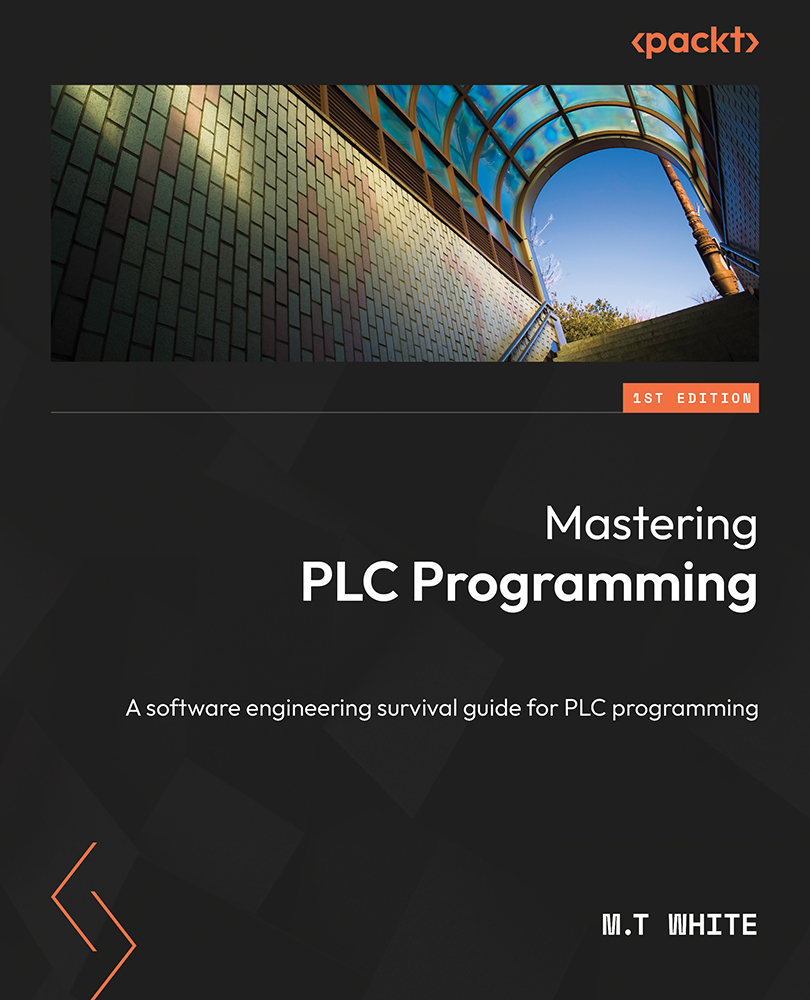Final project – motor alarm system
For the final project, we are going to create a motor alarm system. In the real world, motors are a pivotal part of automation. However, if a motor starts drawing too much or too little current, there could be a problem. Also, if the operating temperature is over or under range for the motor, there could be a problem. Therefore, we need alarms to indicate when these events occur and what they are. To round out the chapter, we are going to create an HMI similar to the one in the last section; however, we are going to add more alarms. So, the first thing we are going to do is lay out some requirements.
Requirements
Motors have an optimal operating range for temperature, drawn voltage, and communication between the drive and PLC. We need to monitor these, and if there is any abnormal behavior, we need to trigger an alarm. Also, since there can be multiple issues all at once, we need to log all the issues so the technician can search the...


























































